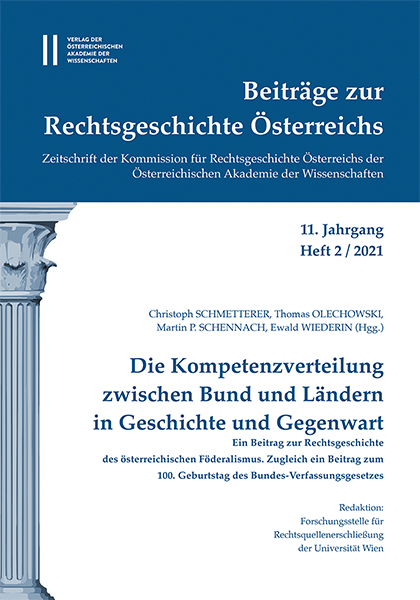
Beiträge zur Rechtsgeschichte Österreichs 11. Jahrgang Heft 2/2021, pp. 271-283, 2021/12/16
Die Kompetenzverteilung zwischen Bund und Ländern in Geschichte und Gegenwart
Ein Beitrag zur Rechtsgeschichte des österreichischen Föderalismus. Zugleich ein Beitrag zum 100. Geburtstag
des Bundes‐Verfassungsgesetzes
The question of the distribution of competences was one of the most discussed topics during the creation of the Federal Constitutional Act. Hans Kelsenʹs drafts were of comparatively little significance in this respect; instead, in the autumn of 1919, Chancellor Renner requested the state offices to name areas of competence which, in their view, should be a matter for the federal state. This resulted in a very long and casuistic catalogue, which was further expanded in the course of the negotiations. The political parties were unable to reach an agreement on the school system in particular; other matters remained controversial to the end as well. Ultimately, the adoption of the Federal Constitution was only possible because the two major parties agreed to postpone the entry into force of the competence provisions until a later, still uncertain date, and to retain the competence provisions of the monarchy until then. With the entry into force of the Federal Constitutional Act on 10 November 1920, Austria was formally transformed into a federal state, but in substantial terms – due to the lack of competence provisions – it was by no means a federal state.
Keywords: competence provisions –Federal Constitutional Act – federalism – Hans KELSEN